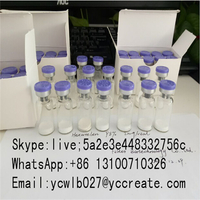Theophylline
Specifications
Product Name: Theophylline
Synonyms: 1,3-Dimethyl-3,7-dihydro-1H-purine-2,6-dione;1,3-dimethyl-xanthin;1H-Purine-2,6-dione,
3,7-dihydro-1,3-dimethyl-;3,7-dihydro-1,3-dimethyl-1h-purine-6-dione;3h)-dione,1,3-dimethyl-purine-6(1h;6-dione,3,7-dihydro-1,3-dimethyl-1H-Purine-2;accurbron;Acet-theocin
CAS: 58-55-9
MF: C7H8N4O2
MW: 180.16
EINECS: 200-385-7
Melting Point: 270-274 oC
Assay: 99%
Appearance: White crystal or crystal powder
Storage: Kept in a dry and cool place
Stability: Stable. Incompatible with strong oxidizing agents.
Chemical Properties : White to light yellow crystal powder
Usage : Xanthine derivative with diuretic, cardiac stimulant and smooth muscle relaxant activities; isomeric with theobromine. Small amounts occur in tea. Bronchodilator.
Theophylline Description:
Theophylline, structurally 1, 3-Dimethylxanthine, is a white crystalline powder with a bitter taste; found in tea leaves and prepared synthetically. Chemical designation is
1,3-Dimethyl-2,6-dioxo-1,2,3,6-tetrahydropurine. Theophylline, its salts, and its derivatives (examples are aminophylline, oxtriphylline) are bronchodilators which relaxe and open the air passages
to the lungs to increase the flow of air through them, and thus are used in the treatment and/or prevention of symptoms of bronchial asthma and of reversible bronchospasm associated with chronic
bronchitis and emphysema. They are used as muscle relaxants, central nervous system and cardiac muscle stimulants.
- Contact: Jackson Van











